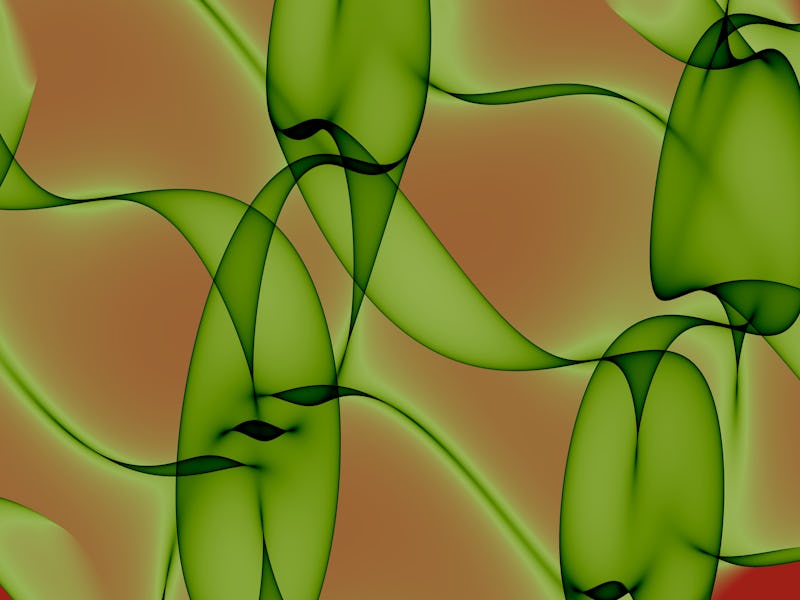Scientists create fake leaves that generate a clean fuel source
All you need is sun, water, and some creativity.

At Cambridge University, it’s not uncommon to glance at the River Cam and spot a punt boat crammed with students, or perhaps an emerald-headed mallard floating along the water. A more extraordinary sight: a cluster of scientists intently watching a fake 15.5-square-inch leaf floating by the Bridge of Sighs.
This expedition wasn’t just a leisurely lab field trip — the group of Cambridge scientists intended to test a new kind of artificial leaf that could revolutionize renewable energy production.
This fake greenery uses artificial photosynthesis to transform water and sunlight into a form of fuel called syngas. Unlike the power created by solar or wind farms, syngas could replace the gasses sourced from traditional fossil fuels and offer a more sustainable, cleaner alternative, according to a new study published in the journal Nature.
“Our lightweight artificial leaves can be employed at open water sources, thereby allowing them to move from land to sea and lakes to produce fuels from sunlight,” Erwin Reisner, lead study author and professor of energy and sustainability at Cambridge, tells Inverse.
At Cambridge University, scientists tested their next-gen, lightweight artificial leaf device on the charming River Cam.
What’s new — Artificial leaves are not a novel concept — scientists have been developing them since the 1970s. But the existing prototypes are often complex and clunky, so they can be difficult to realize outside the lab. To build a sleeker prototype, the Cambridge researchers looked to nature for inspiration, says study author and chemist Virgil Andrei.
Ultimately, the researchers wanted to redesign the leaf structure to make it compatible with current manufacturing methods and ideal for real-world applications. To make this happen, they needed to lighten things up.
What they did — To build their high-tech leaf, the researchers incorporated two types of light-absorbing materials:
- Yellow bismuth vanadate, which uses blue light to separate oxygen and hydrogen from water
- Perovskite, which takes advantage of the full light spectrum to condense protons and carbon dioxide into syngas
Similar to the reaction that goes down inside a plant to transform sunlight into food, these light reactions create the components necessary for syngas, namely carbon monoxide and hydrogen. The water used in this reaction can either be added directly to the system or sucked up from the water it floats on, Andrei says.
A closer look at the new leaf concept, which uses artificial photosynthesis to transform water and sunlight into a form of fuel called syngas. This could replace gas created by fossil fuels.
To make these absorbers both lightweight and water resistant, the team installed them on flexible, lightweight materials that form a buoyant base. They also used thin metal films and carbon coatings to waterproof them.
“As a result, our devices became so light that they were able to float on water,” Andrei says. The researchers placed the heavier perovskite in the middle of the bismuth vanadate electrode to conserve the center of mass and balance the floating leaf. In this case, they drew inspiration from certain forms of marine life, including lotus leaves, jellyfish and squids, that follow similar symmetry patterns.
When testing their leaves on the River Cam, the leaves were placed in a light plastic bag to collect the gasses created during its sun-filled journey.
The artificial leaf could be employed in off-grid areas, like islands, to enable decentralized fuel production without sucking up land from locals.
Why it matters — Why is this plant-inspired design useful? For starters, it’s lightweight and portable enough to be used in off-grid areas, like islands, to enable decentralized fuel production. This helps to produce fuel in the middle of nowhere.
Smaller leaves could easily convert into bigger set-ups. The possibilities include mining lakes near ports, or to prevent moisture evaporation from irrigation canals. This is “very topical when considering the current droughts,” he says.
Most importantly, all of this can be accomplished without sucking up any extra land that communities might need for housing or agriculture.
What’s next — Right now, the mini leaves can’t create enough syngas to be commercially viable, but Reisner says the team is currently working to scale them up from square centimeters to square meters.
Future research should focus on improving the leaves’ efficiency and stability by developing more efficient light absorbers and chemical catalyst to drive the reactions, according to Reisner and Andrei. These improvements will not only make the leaves better gas producers, but will also allow them to survive harsher environments than the River Cam — perhaps allowing them to brave crashing waves thousands of miles away in open oceans.
This article was originally published on